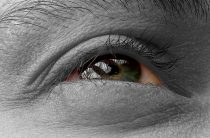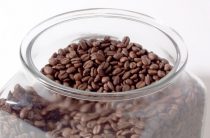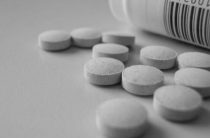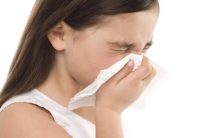With the onset of warm summer days, almost every one of us (both adults and children) plans their vacation.
Whether it's a dacha or a seaside resort, everywhere we want to sunbathe, bask in the sun. Its benefits have long been proven: the sun's rays saturate the body with vitamin D, help strengthen the immune system, and have a good effect on the nervous system. But it is worth remembering that an excessive amount of ultraviolet radiation can not only provoke burns, but also cause allergies.
A dermatological disease caused by exposure to the human body of sunlight and the presence of photosensitizers is called sun allergy or photodermatosis.
Signs of photodermatosis may occur starting in May. Often it occurs in those children who go to rest in hotter climatic zones. By itself, the sunbeam is not considered an allergen, the reaction occurs only when a lot of allergenic substances accumulate under the skin. So, in people whose organs (kidneys, liver, adrenal glands) do not cope well with their excretory function, such an allergy often occurs. Some medications, bergamot, citrus oils, and improper functioning of the endocrine system can also provoke it.
Sun allergies in children: symptoms that require special treatment. They appear within a couple of hours after exposure to ultraviolet radiation on the skin, these are:
- Itching, redness;
- Rash - small blisters;
- Swelling of the skin and mucous membranes.
The reaction of the body of children is not always instant, so symptoms may occur after 18 hours, or even several days.
The most unpleasant symptoms include unbearable itching and burning. You can even get allergic to the sun by visiting a solarium. In this case, it is worth talking about photodermatitis.
One feature of sun allergy in children will be a more pronounced reaction. The baby may have a fever, weakness, fever.
The consequences of sun allergy in children can be:
- bronchospasm;
- lowering blood pressure;
- fainting;
- eczema.
Children often "outgrow" this type of allergy, and they do not have any serious disorders.
In a child, an allergy to the sun manifests itself in the following symptoms:
- rashes;
- skin itching;
- pimples;
- tearing;
- congestion of the nasal passages.
As soon as these signs become noticeable, the child should immediately be taken to a shaded place, and treatment should begin. The first actions should be washing with cold water, drinking cool tea with lemon, taking antihistamines. On areas of the body that have been exposed to sunlight, it is necessary to apply creams containing methiuracil, lanolin. When the disease is mild, children can be wrapped in a sheet soaked in infusion of chamomile, calendula or green tea.
When the disease proceeds in a complex form, hospitalization is necessary. To avoid unpleasant symptoms of solar allergies will help to observe the time of sunbathing: before 10 am and from 4 pm.
Causes of Sun Allergies
Endogenous causes of sun allergy are:
- Problems in the liver, kidneys, adrenal glands;
- Too light skin, on which there are many birthmarks and freckles;
- Hormonal disorders that occur during pregnancy due to too much stress on the woman's body;
- The use of certain drugs that have anti-inflammatory qualities can cause hives. These drugs include tetracycline, amiodarone, fluoroquinolones, sulfonamides, griseofulvin.
- Lack of vitamins in the body (particularly vitamin PP).
- Porphyria is a genetically transmitted disease in which a person's pigment metabolism is disturbed.
- Weakened immunity and general weakness of the body.
In children, the following are added to these reasons:
- Very strong influence of ultraviolet radiation on the delicate skin of children;
- Use of sunscreen with para-aminobenzoic acid;
- The presence of allergens that have accumulated on the body of the baby;
- hereditary factors.
Signs of exogenous photodermatitis begin to appear under the influence of certain substances:
- Various drugs (especially sulfonamides, tetracyclines, barbiturates, furosemides, non-steroidal anti-inflammatory drugs);
- Cosmetics, in which there are a lot of fragrances and dyes;
- Spirits and lotions containing alcohol;
- Essential oils (bergamot, lavender, hazelnut);
- Plant juice (hogweed, angelica, clover);
- Food products (for example, citrus fruits).
External factors act for a rather short time, they provoke an acute allergy.
Medical treatment for sun allergy
Treatment of allergies in children, which is caused by photosensitizers, is to eliminate the influence of these factors. Further treatment should be carried out, depending on how the disease manifests itself. If the allergy manifests itself in acute forms, local preparations are used for its treatment: creams, ointments, lotions, which have analgesic, healing, anti-inflammatory properties. Non-steroidal anti-inflammatory drugs should be used only by prescription, as they can cause an increase in allergic manifestations.
The treatment of chronic allergies in children is significantly different, because in order to eliminate it, it is worth first conducting an examination, identifying the causes, and then starting taking medications. You need to protect your skin from direct sunlight. For the treatment of chronic solar allergies, work is carried out in the following areas:
- Carry out therapy of the underlying disease;
- Apply external anti-inflammatory drugs (for example, creams and ointments containing glucocorticosteroids);
- Take vitamins B, PP, E, A and carotenoids, antihistamines;
- In especially severe cases, hormonal agents are used.
Doctors for sun allergies prescribe the following treatment:
- The use of non-hormonal creams and ointments, which include "Fenistil gel", "Desitin", "Dexpanthenol", "Psilo-balm". They will help relieve itching, redness.
- The use of corticosteroid drugs in severe cases. They can only be prescribed by a doctor. The course of treatment with them should not exceed five days, exceeding this period can contribute to the appearance of erythema on the skin, vasodilation, and other skin diseases.
- Other ointments made on the basis of zinc, hydrocortisone, methyluracil are freely available in pharmacies. Their main purpose is the elimination of inflammatory processes, promoting the restoration of the skin.
- Antihistamines are used to prevent the occurrence of a rash, complications, manifested in the form of swelling of the mucous membranes. These include "Suprastin", "Tavegil", "Erius", "Tsetrin".
- Vitamin therapy is carried out in order to increase immunity and saturate the body with essential vitamins. The doctor prescribes immunostimulating drugs that help improve health. Most often prescribed vitamin complexes.
- The use of enterosorbents is necessary to cleanse the body of toxic substances, allergens. Most often, doctors prescribe Polysorb, Polyphepan, Enterosgel and recommend drinking 2-2.5 liters of fluid per day.
- In order to restore the normal functioning of the liver, hepatoprotectors are taken: Karsil, Silibor, Gepabene and others.
- Anti-inflammatory drugs that help eliminate inflammation of the skin include Indomethacin, Ibuprofen.
People who suffer from a chronic form of allergies are advised to follow a dairy-vegetarian diet and completely abandon alcohol.
Allergy treatment is necessary not only to get rid of the consequences, but also to eliminate the causes.
Redness on the skin, rash, blisters, itching can be eliminated using ointments that contain zinc, methylracil, lanolin. The doctor may prescribe hormonal ointments. Anti-inflammatory drugs will help relieve inflammation, which most often include antihistamines that do not have a negative reaction to ultraviolet radiation.
Depending on the severity of the disease, its treatment can last from a couple of days to a couple of weeks. When the treatment is ineffective, the allergy can become chronic, which will greatly hinder the healing process.
If a patient has solar urticaria, there is a high probability that it will transform into eczema. In this case, it is strictly forbidden for a person to stay in the open sun.
After reaching a certain age, allergy to the sun can disappear forever. It is impossible to self-medicate without first consulting a doctor.
Treatment of allergies with folk remedies
If a child has an allergy to the sun, you need to address the cause that provoked it. First of all, the liver and kidneys are treated. With the help of folk remedies, the main symptoms of the disease are removed: itching, swelling, rash. For example, a cabbage leaf is suitable for healing burns. Also effective are grated potato and cucumber compresses. Applying them for thirty to forty minutes to the body, you can notice a significant improvement in the condition of the skin.
In order to eliminate the causes of the disease, folk remedies are used that normalize the liver.
Itching, rash and redness eliminate tincture of wormwood. In order to cook it, in the spring they pick up wormwood, pour it with alcohol, insist for three days. Inflamed skin is wiped with this remedy, and in addition they take baths with celandine. Allergy symptoms disappear very quickly.
A decoction of wormwood is also suitable for getting rid of rashes from allergies to the sun. It is prepared by boiling wormwood for ten minutes. When the product has cooled, they wipe the damaged skin. The intensity of itching is significantly reduced, and soon it stops altogether. It is important that the wipes are fairly frequent.
Oil with celandine is treated with red blisters, skin that itches a lot. Preparing it is quite simple: you should take a liter jar, put celandine flowers in it up to half, pour vegetable oil and insist for three weeks, then strain. Before going to bed, the affected skin is wiped with hydrogen peroxide and a napkin soaked in this oil is placed on top, covered with a film and fixed with adhesive tape. In the morning, the compress is removed, the skin is again rubbed with peroxide. Such actions should be performed several nights in a row.
Herbal baths are very helpful with swelling of the skin, itching. The following herbs are considered medicinal: celandine, mint, lemon balm, clover, plantain, chamomile, tansy, yarrow. It would be better to use dry raw materials in the spring, and fresh ones in the summer.
Abundant skin rashes can be eliminated by taking half-hour soda baths.
Almond oil with menthol, or in extreme cases, freshly squeezed tomato juice is used after bathing to soften the skin and moisturize it.
Aloe juice also perfectly heals and moisturizes the skin.
Blisters are eliminated with chamomile compresses.
Local treatment is carried out using an infusion of oak bark, juniper.
It is also effective to lubricate the affected areas of the skin with ointments with advantan, loriden, oxycort, fluorocort, flucinar.
You can prevent the appearance of hives by taking horseradish juice mixed with bee honey in the same amount. Also, peppermint helps, from which an infusion is prepared and taken 50 ml three times a day.
A bath with oatmeal flakes will help eliminate skin inflammation, rashes and itching. In order to prepare it, you should take half a kilogram of oatmeal, pour half a liter of boiling water over them, leave for one hour, and add to the bath. You need to take these baths several times a week.
Infusion of hops is drunk instead of tea, a third of a glass before meals.
It is very important that the body of any person, especially an allergic person, has enough vitamins. You need to eat cabbage and parsley, which are rich in vitamins C, PP, and therefore can reduce the skin's susceptibility to ultraviolet radiation.
First aid for fainting
When a person loses consciousness from exposure to sunlight, the following measures should be taken:
- Bring the patient to himself;
- Make sure that his clothes do not interfere with the respiratory tract, and do not touch damaged skin;
- When the body temperature rises above 38 degrees, you need to make cold compresses, apply them on the forehead, in the groin area, and lower legs. If possible, give the patient an antipyretic drug - paracetamol, or ibuprofen.
- If the child is vomiting, it should be turned on its side.
Preventive measures for sun allergies
People who are allergic to the sun should wear loose-fitting clothes made of thick fabrics, with long sleeves, stay out of the sun for a long time, and give up deodorants and perfumes when going to the beach. When allergy symptoms are mild, you can train your body by periodically going out in the sun for a short time.
In order not to provoke the development of acute allergies, it is very careful to use medicines that contain photosensitizers. Before going to the sea, it is recommended to consult a doctor about the possibility of replacing medicines with safer ones that do not cause sun allergies. Going to the beach, do not use perfumes, cosmetics, lotions, perfumes, treat your skin with special sunscreens.
Psychological problems can also exacerbate allergy symptoms. It is better not to invent anything for yourself, but to consult an allergist, that he has prescribed the necessary tests and tests to detect a predisposition to this disease.
When it comes to chronic allergies, you need to start using medications that have photoprotective qualities before the start of the spring-summer season, but only after consulting a doctor. These medicines include:
- nicotinic, paraiminobenzoic, pantothenic acids
- thiamine
- pyridoxine
- riboflavin.
The skin is protected by:
- salolo;
- lanolin;
- methyluracil;
- ichthyol;
- quinine.
It is best if the patient prefers some other vacation instead of the sea. Among other things, people who suffer from chronic allergies can go to phototherapy sessions from early spring, during which the radiation dose will gradually increase. Thus, before the summer, a person gets used to the sun's rays, and the risk of a possible exacerbation of allergies is significantly reduced.
By following the tips below, you can protect yourself from sun allergies:
- A quarter of an hour before going outside, it is necessary to apply sunscreen to the skin so that it softens it and protects it from the effects of ultraviolet radiation. They should be used before tanning, directly during the tanning period, and every time after swimming. Approximately every half hour.
- As soon as a person left the water, you should not rub your body with a towel, it is better to blot the drops and not dry yourself.
- While relaxing on the beach, do not use decorative cosmetics, perfumes, blush, creams and other products. It is this cosmetics that can cause allergic reactions.
- People with fair and sensitive skin should avoid direct sunlight. Sunbathing is under an awning.
- When it's too hot outside, you need to drink at least two liters of fluid a day. Do not consume alcohol, drink few hot drinks.
- Take antihistamines with you if a person has a predisposition to allergies.
- 3rd generation antihistamines are very effective. They are taken for a long time without significant loss to health.
Get more information you need from our consultant.















